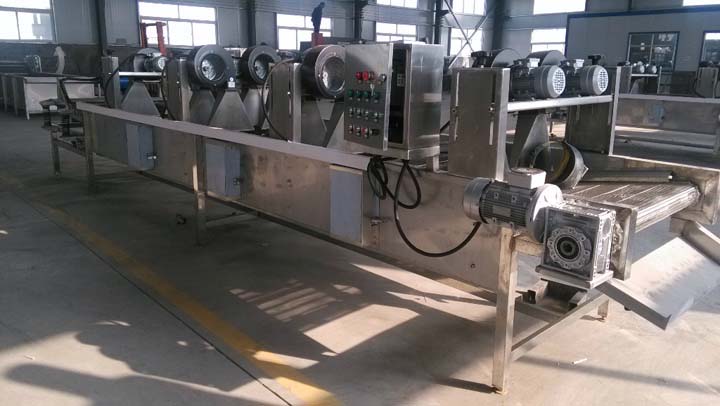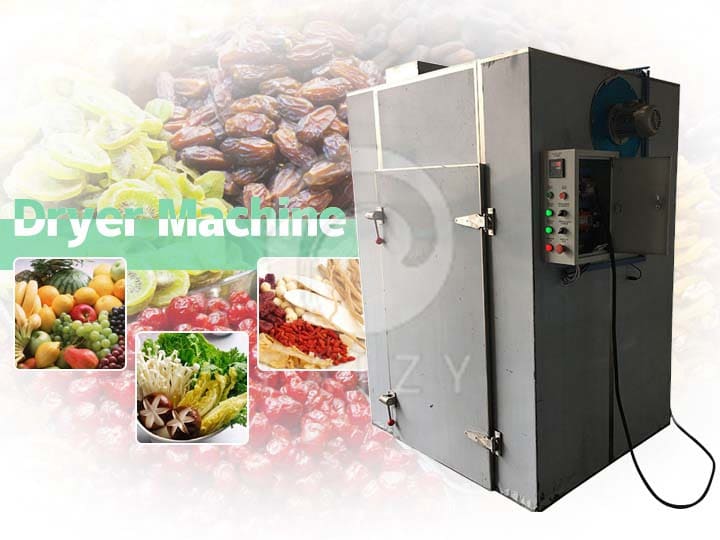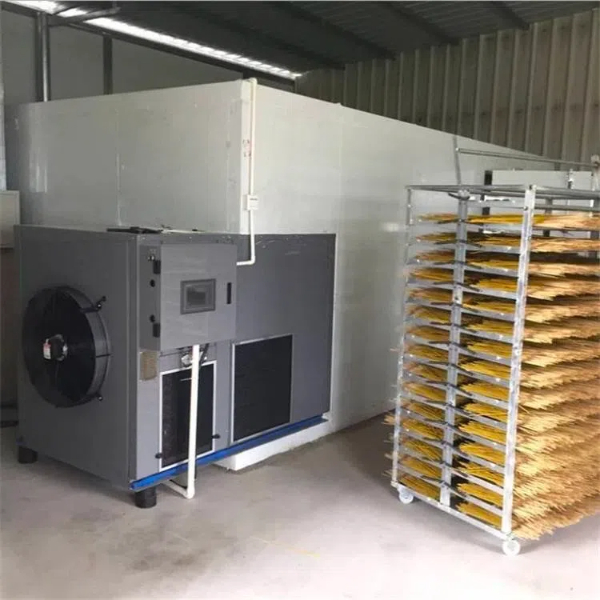
Content Menu
● Introduction
● Understanding Fruit and Vegetable Dryer Machines
>> Types of Food Dehydrators
● Benefits of Using a Fruit and Vegetable Dryer Machine
● How to Choose the Right Fruit and Vegetable Dryer Machine
● Using Your Fruit and Vegetable Dryer Machine
● Creative Uses for Your Dehydrated Produce
● Maintenance and Care
● Advanced Techniques and Tips
● Environmental Impact and Sustainability
● Conclusion
● Frequently Asked Questions
>> 1. Q: What are the best fruits and vegetables for dehydrating?
>> 2. Q: How long do dehydrated fruits and vegetables last?
>> 3. Q: Can I use a fruit and vegetable dryer machine to make pet treats?
>> 4. Q: Is it necessary to pretreat fruits before dehydrating?
>> 5. Q: How does dehydrating affect the nutritional value of fruits and vegetables?
Introduction
In today's fast-paced world, where convenience and health-consciousness go hand in hand, fruit and vegetable dryer machines have emerged as indispensable kitchen appliances. These versatile devices, also known as food dehydrators, offer a simple yet effective way to preserve the goodness of nature's bounty while extending the shelf life of our favorite produce. Whether you're a health enthusiast, a busy parent, or simply someone who loves to experiment in the kitchen, a fruit and vegetable dryer machine can revolutionize the way you approach food preservation and snack preparation.
Understanding Fruit and Vegetable Dryer Machines
At their core, fruit and vegetable dryer machines are designed to remove moisture from food items, thereby inhibiting the growth of bacteria, yeast, and mold. This process not only extends the shelf life of fruits and vegetables but also concentrates their flavors and nutrients, resulting in delicious, healthy snacks and ingredients.
Types of Food Dehydrators
1. Stackable Tray Dehydrators: These are the most common and affordable options for home use. They consist of multiple trays that can be stacked on top of each other, allowing for easy expansion of drying capacity.
2. Shelf Tray Dehydrators: Often found in commercial settings, these units feature removable shelves that slide into a cabinet-like structure. They offer more consistent drying and are easier to clean.
3. Commercial Food Dehydrators: These large-scale machines are designed for industrial use, capable of processing large quantities of fruits and vegetables efficiently.

Benefits of Using a Fruit and Vegetable Dryer Machine
1. Preservation of Nutrients: Unlike other preservation methods, dehydration retains most of the original nutrients in fruits and vegetables.
2. Extended Shelf Life: Dried fruits and vegetables can last for months or even years when stored properly.
3. Space-Saving: Dehydrated foods take up less storage space compared to their fresh counterparts.
4. Cost-Effective: Buying produce in bulk during peak season and dehydrating them can lead to significant savings.
5. Versatility: From creating healthy snacks to preparing ingredients for recipes, the possibilities are endless.
6. Reduced Food Waste: Dehydrating excess produce helps minimize food waste in households.
How to Choose the Right Fruit and Vegetable Dryer Machine
When selecting a food dehydrator, consider the following factors:
1. Capacity: Determine how much produce you plan to dry at once and choose a machine with appropriate tray space.
2. Temperature Control: Look for units with adjustable temperature settings to accommodate different types of fruits and vegetables.
3. Air Flow: Efficient air circulation ensures even drying across all trays.
4. Noise Level: Some machines can be noisy, so consider this if you plan to run the dehydrator overnight.
5. Ease of Cleaning: Dishwasher-safe trays and removable components make maintenance easier.
6. Additional Features: Timer functions, automatic shut-off, and transparent doors can enhance user experience.
Using Your Fruit and Vegetable Dryer Machine
To get the most out of your food dehydrator, follow these steps:
1. Preparation: Wash and slice fruits and vegetables uniformly to ensure even drying.
2. Pretreatment: Some fruits benefit from a quick dip in lemon juice or ascorbic acid solution to prevent browning.
3. Arrangement: Place slices on trays in a single layer, ensuring proper air circulation.
4. Temperature Setting: Set the appropriate temperature based on the type of produce (typically between 95°F to 145°F).
5. Drying Time: Monitor the process, as drying times can vary from a few hours to over a day, depending on the food and desired texture.
6. Storage: Once cooled, store dried fruits and vegetables in airtight containers in a cool, dark place.

Creative Uses for Your Dehydrated Produce
1. Healthy Snacks: Create your own trail mix with dried fruits and nuts.
2. Powders: Grind dried vegetables into powders for seasoning blends or smoothie boosters.
3. Fruit Leathers: Make all-natural fruit rolls for a fun, kid-friendly snack.
4. Dried Herbs: Preserve fresh herbs from your garden for year-round use.
5. Soup Mixes: Prepare instant soup mixes with dehydrated vegetables and herbs.
Maintenance and Care
To ensure the longevity of your fruit and vegetable dryer machine:
1. Clean trays and components after each use.
2. Regularly check and clean air filters if present.
3. Store the machine in a dry place when not in use.
4. Inspect the heating element and fan periodically for optimal performance.
Advanced Techniques and Tips
As you become more comfortable with your food dehydrator, consider exploring these advanced techniques:
1. Layering: Create complex flavors by drying different fruits together.
2. Rehydration: Learn how to rehydrate dried vegetables for use in cooked dishes.
3. Jerky Making: Expand beyond fruits and vegetables to create homemade jerky.
4. Yogurt Making: Some dehydrators can be used to make homemade yogurt.
Environmental Impact and Sustainability
Using a fruit and vegetable dryer machine can contribute to a more sustainable lifestyle:
1. Reduce food waste by preserving excess produce.
2. Lower energy consumption compared to freezing or canning methods.
3. Minimize packaging waste associated with store-bought dried foods.
4. Support local farmers by buying seasonal produce in bulk for dehydration.
Conclusion
A fruit and vegetable dryer machine is more than just a kitchen appliance; it's a gateway to a healthier, more sustainable, and creative approach to food. By mastering the art of dehydration, you can enjoy your favorite fruits and vegetables year-round, reduce food waste, and explore new culinary horizons. Whether you're a seasoned chef or a curious beginner, the world of food dehydration offers endless possibilities to enhance your diet and lifestyle.

Frequently Asked Questions
1. Q: What are the best fruits and vegetables for dehydrating?
A: Some of the best options include apples, bananas, berries, tomatoes, carrots, and herbs. These tend to retain their flavor well and have a good texture when dried.
2. Q: How long do dehydrated fruits and vegetables last?
A: When properly dried and stored in airtight containers in a cool, dark place, dehydrated produce can last anywhere from 6 months to a year or even longer.
3. Q: Can I use a fruit and vegetable dryer machine to make pet treats?
A: Yes, many pet owners use food dehydrators to make healthy, preservative-free treats for their pets, such as dried sweet potato or apple slices for dogs.
4. Q: Is it necessary to pretreat fruits before dehydrating?
A: While not always necessary, pretreating certain fruits (like apples and pears) with lemon juice or ascorbic acid can help prevent browning and preserve color.
5. Q: How does dehydrating affect the nutritional value of fruits and vegetables?
A: While some nutrients, particularly vitamin C, may be lost during the drying process, most minerals and fiber are retained. Dehydration also concentrates certain nutrients, making dried foods nutrient-dense.












